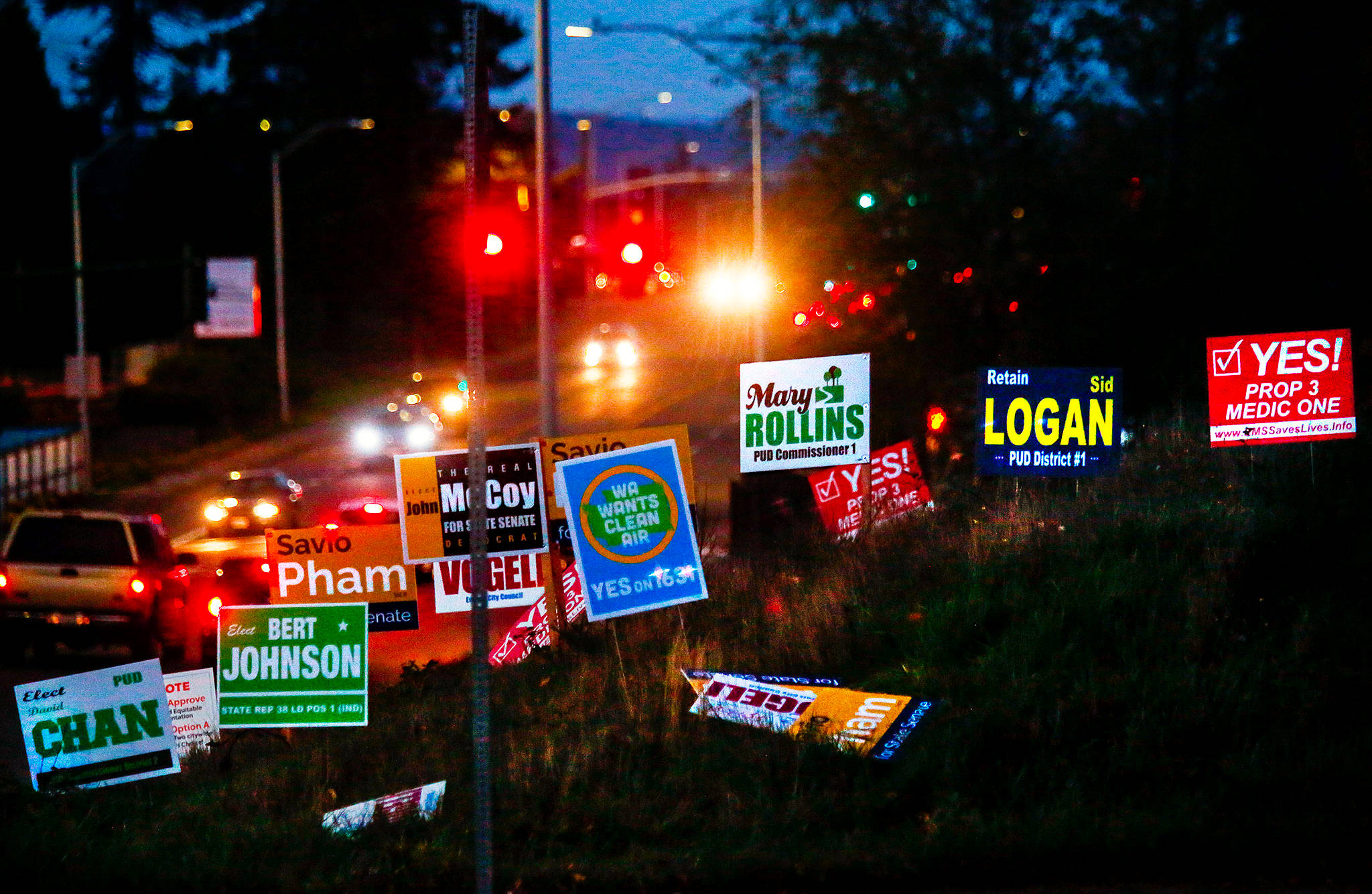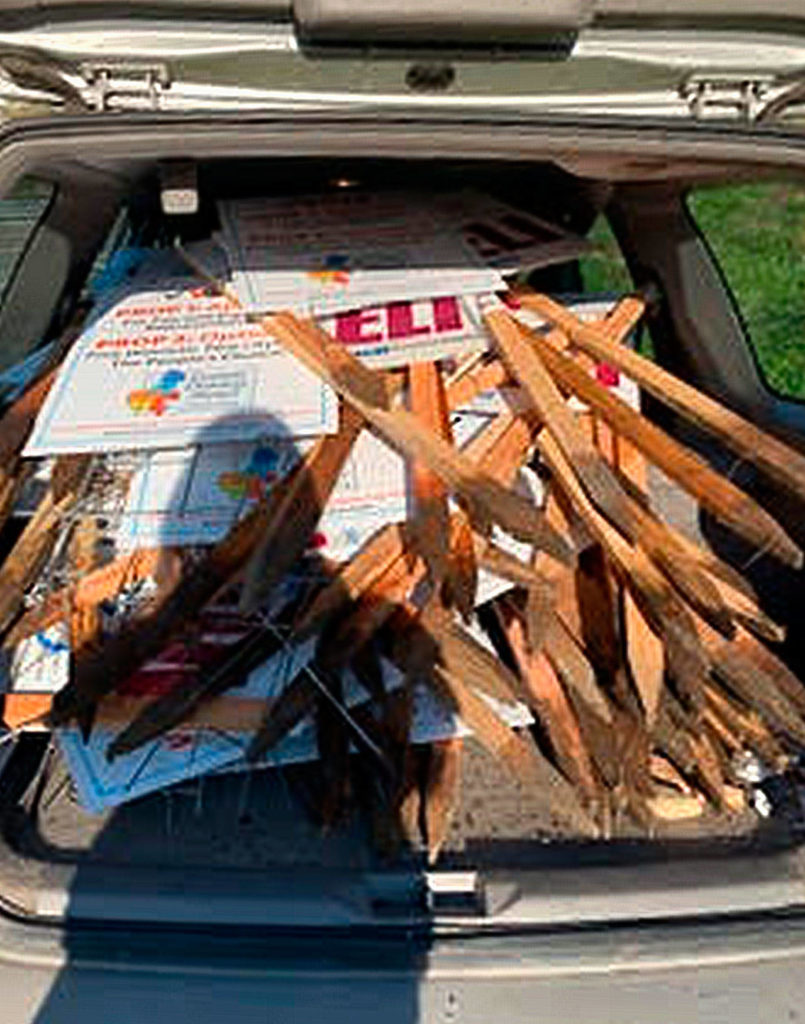Election night celebrating didn’t keep Everett City Council candidate Liz Vogeli from cleanup duty the next day. Picking up her campaign signs is a big task.
“I’ve been out for four hours gathering signs,” said Vogeli, who after Thursday’s update was leading Tyler Rourke by 618 votes, 51.2 percent to 48.7 percent, in their race for the council’s Position 4. By email late Wednesday, she said about her signs, “I will certainly be calling for reinforcements because I placed A LOT!”
She shared a photo of the back of her sign-filled car, with dirt still on the wooden stakes. The signs were hers and those touting the “Everett Districts Now” campaign. Voters approved Everett’s Proposition 1, which Vogeli supported. It calls for council members to be elected by district rather than citywide.
Having been out myself Wednesday — in Lynnwood, the Mill Creek area, near Silver Lake and by The Herald’s Everett offices — it’s clear that Vogeli is far from the only one with a sign-removal job to do.
Just before dusk Wednesday, there remained no fewer than 16 political signs next to the sidewalk on the northeast corner of Colby Avenue and 44th Street in Everett. More were down, littering the grass nearby.
Along 128th Street SE in Everett Wednesday was a cluster of signs for candidates who ran for the U.S. Senate (Republican Susan Hutchison), the Snohomish County PUD Commission (David Chan), the state Senate (Republican Mario Lotmore), and the state House of Representatives (Republicans Mark Harmsworth and Petra Bigea).
That spot at the edge of McCollum Park didn’t turn out to be a winner. On Election Day, none of those candidates prevailed.
It can’t be any fun to lose an election. Understandably, candidates have busy lives whether or not they end up winning elective office. Still, it’s time, and some would say past time, to take down this year’s campaign signs.
Officially, though, candidates get some slack.
In the Everett Municipal Code, Chapter 19.36, there’s a section pertaining to political signs. Under “Responsibility for Compliance,” the code says, “It shall be presumed that any violation of this subsection was done at the direction and request of the political candidate and/or campaign director.”
Signs not allowed include those “placed on any utility pole, public building, public structure, or public property other than a public right-of-way.” It’s not OK for a sign to obstruct sight for drivers or create a hazard for “vehicles or pedestrians.”
As for the time allowed to take them down, the code gives more than two weeks. It prohibits political placards “not removed within fifteen days after the election for which the signs are intended.”
There’s no mention of consequences, but Everett spokeswoman Meghan Pembroke said Wednesday that “it could become a code enforcement issue.”
Snohomish County, too, has a political signs section as part of its Unified Development Code. The county’s regulations involve signs needing names and addresses of people or organizations responsible for them, and also about compliance with height rules and the use of lighting or movement.
Out walking along 19th Avenue SE near Silver Lake Wednesday, Peter Frickey passed a bunch of campaign placards. There were signs for Steve Hobbs, the victor in the 44th District state Senate race, for PUD Commission District 1 winner Sid Logan, and one for Vogeli.
“Candidates and volunteers are all gung-ho when they put them up. Now, it’s let someone else do it,” Frickey said.
“This is my first experience placing and gathering signs,” said Vogeli, adding that she hopes to get hers picked up as soon as possible. “I know how tacky they are once they’ve served their purpose.”
Julie Muhlstein: 425-339-3460; jmuhlstein@heraldnet.com.
Talk to us
> Give us your news tips.
> Send us a letter to the editor.
> More Herald contact information.


























